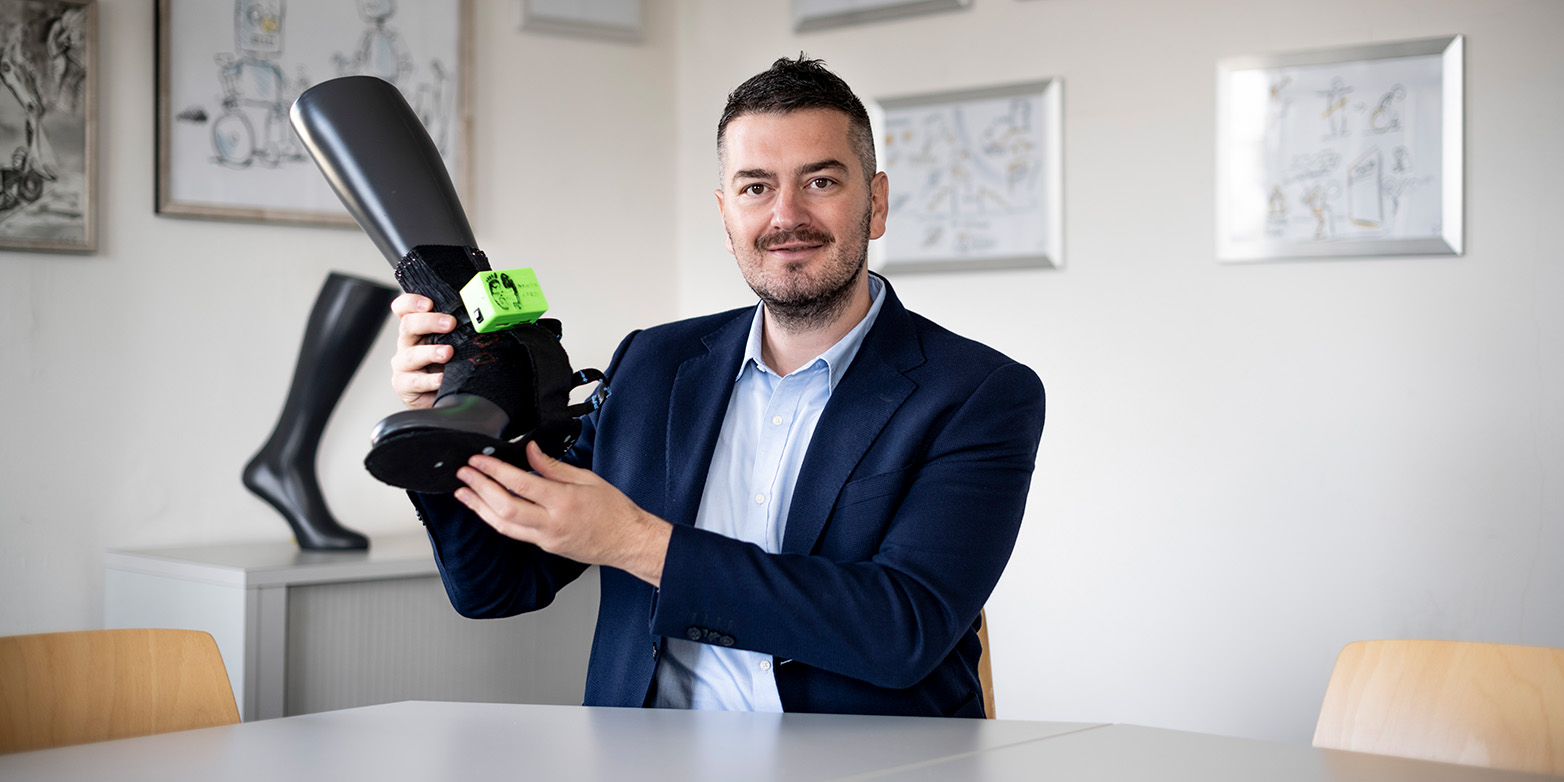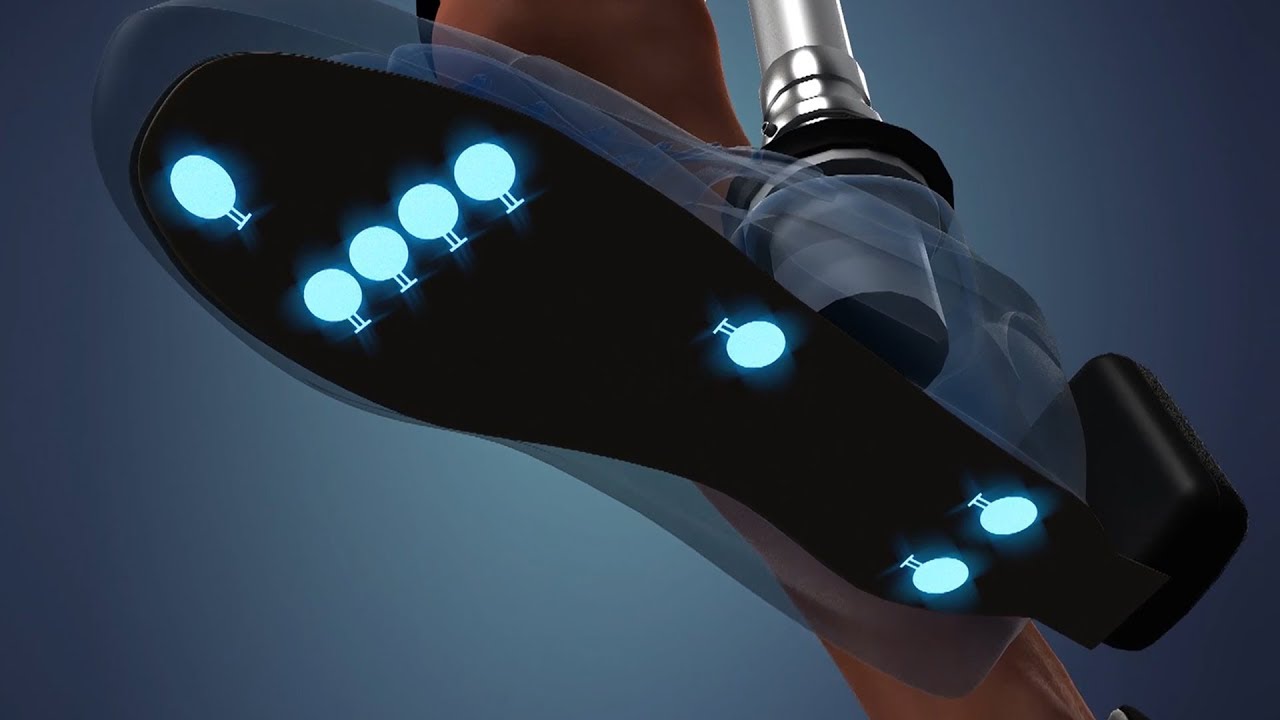Master of neuromodulation
Stanisa Raspopovic connects the digital world of sensors and electrical circuits with the nervous system and its cellular circuits. Now he is the recipient of the 2021 ETH Zurich Latsis Prize.

Stanisa Raspopovic’s passion for the brain, the nervous system and neurotechnologies began during his undergraduate studies in electrical engineering in Pisa. “At that time, I read a science magazine, explaining about the research on monkeys that could control robot arms with the power of their thoughts and through brainwave measurements,” he recalls.
Raspopovic grew up in Belgrade and Pisa, with love for basketball and science. Today he is an assistant professor at ETH Zurich who can look back on a host of breakthroughs he has achieved in the interface between body and machine. The best known of these are the neuroprostheses for above-knee amputees that he developed together with his team. These leg prostheses are connected to the patient’s thigh nerves via implanted electrodes. These electrodes transmit information to the wearers of the prosthesis from sensors on the sole of the prosthetic foot, so that they can feel when their foot touches the ground – something they haven’t been able to do since the amputation. “This lets us help the patients walk better and reduce their phantom pain,” Raspopovic says. For his achievements, he has now been awarded the ETH Zurich Latsis Prize (see box).
Uniting two worlds
Connecting an electronic device and nerves with each other is extremely complex, as Raspopovic explains. During the years writing his doctoral thesis, also in Pisa, and subsequently in Barcelona and at EPFL in Lausanne, he used numerous computer simulations, later supplemented with animal models, to investigate how the two different worlds can best be combined.
“It’s precisely this interdisciplinarity between computer sciences, electrical engineering, neurobiology, animal research and clinical studies carried out together with doctors that makes our research possible – not to mention what makes it so interesting for me and everyone involved,” Raspopovic says. He thinks that the boundaries between traditional scientific disciplines are becoming increasingly fluid, and he sees himself as a scientist at the interface between various disciplines and ultimately as a neuroengineer.
In nerve cells, information is transmitted via charged atoms (ions), whereas the circuits in electronic devices work with electrons. What both systems have in common is that they can be influenced by an electrical field. “To communicate with nerves, we modulate the electrical field,” Raspopovic says. This can be done in various ways, and in Raspopovic’s previous research he was able to show that the time-variant modulation of charge is particularly effective as opposed to modulation of frequency, a method that researchers had used before. In addition, Raspopovic optimised implanted electrodes geometry in order to precisely manipulate individual nerve fascicles rather than whole nerve.
From the basics to application
Since his Master’s studies, Raspopovic has been interested in fundamental questions: How do we perceive the world with our brains? How do we understand our self-consciousness and where is it physically? How can we connect the nervous system to machines? How can we decode information we get from the nervous system in this way? And ideally, manipulate it for rehabilitation purpose?
The questions that inspire him today, and which he is helping to answer as a researcher, are similarly fundamental in nature: “We’re trying to understand how our nervous system responds to artificial apparatus, such as devices and sensors connected to it via electrodes,” he says. It’s a matter of finding out how the nervous system integrates and processes such information, or how such information from external sensors affects consciousness and subconsciousness. “We’re collaborating with psychologists and neuroscientists on this subject,” Raspopovic explains. “Because, only when we understand this better, we can improve the interfaces between devices and the body.”
Passion, perseverance and a good team
His more recent research work has also embraced neurostimulation. Examples include the treatment of facial paralysis through the precise electrical stimulation of facial nerves or treating numbness and pain in the feet due to nerve damage, as occurs in a lot of diabetes patients. For these purposes, Raspopovic does not work with implanted electrodes, but with ones that are applied to the skin, such as in a specially designed sock. “In these projects, too, we first need to use realistic computer models and artificial intelligence. This helps us understand which electrodes we should use where exactly, and which policy of stimulation in this kind of sock,” he explains.
What is remarkable about Raspopovic’s research, writes the ETH Research Commission on the awarding of the 2021 ETH Zurich Latsis Prize, is that he developed all his innovations, some of which have already been successfully tested on people, from the ground up. “Many discoveries look easy in retrospect,” he says. “But often it is anything but simple.” Many of the challenges that arise are technical in nature – for example, when an electrode or cable breaks somewhere but discovered only later. Also, it was often necessary to work late in the evening, for example when preparing the equipment for clinical tests, or writing up research proposals to submit before a deadline.
Mastering all this requires a lot of perseverance, Raspopovic says. In his view, there are ultimately three things that lead to success: passion, perseverance and a good team. “All three are essential, and they mutually reinforce each other,” he says. He is proud of his team of young, motivated people, who are all driven by passion. And just as passion promotes team spirit, so this in turn promotes perseverance. So that nobody gives up in despair when another electrode or cable breaks.

The ETH Zurich Latsis Prize
Established in 1975 with an endowment from the Greek shipowner Giannis Latsis, the Latsis Foundation funds several Swiss science awards, including the annual ETH Zurich Latsis Prize, with which ETH honours outstanding young researchers from across all disciplines. Worth CHF 25,000, the prize is awarded by the Rector each year on ETH Day.